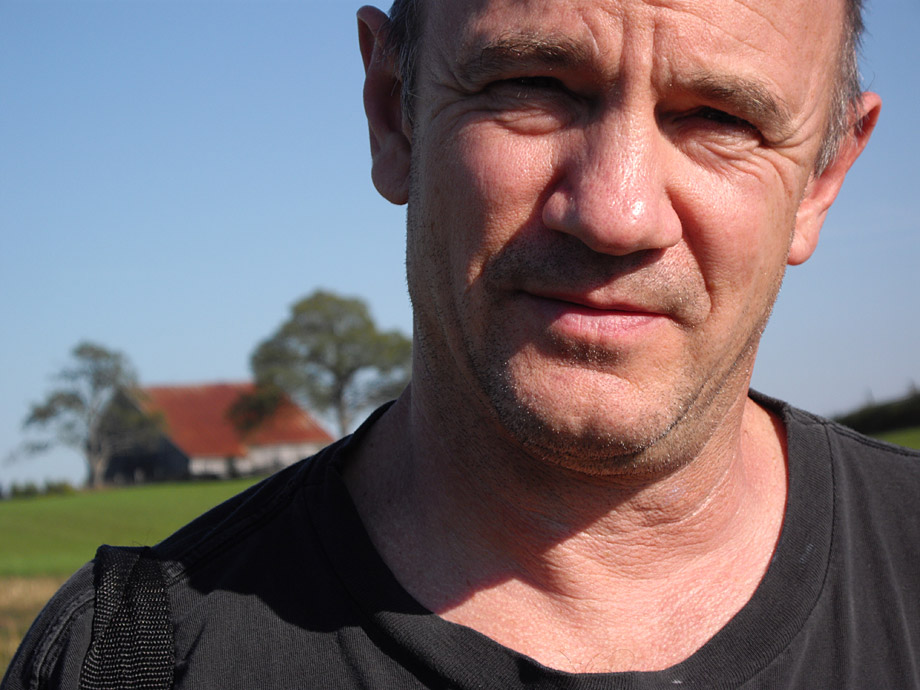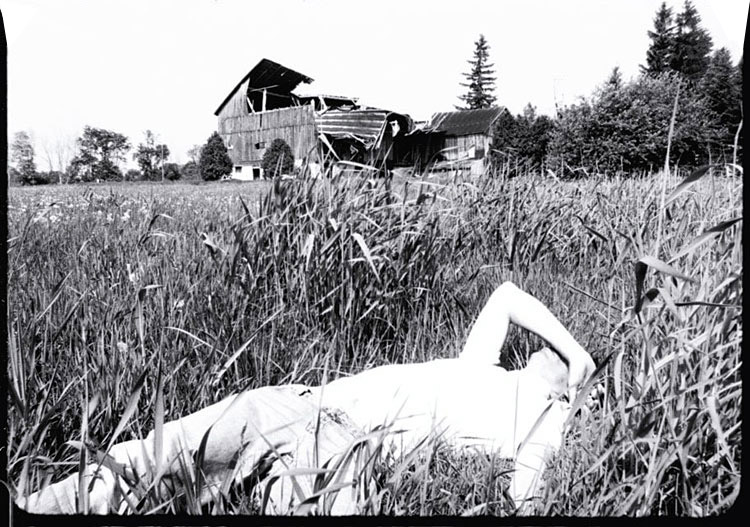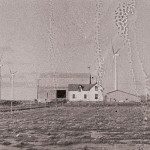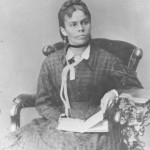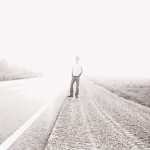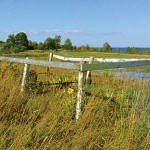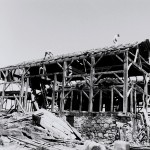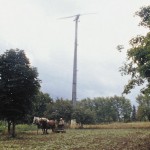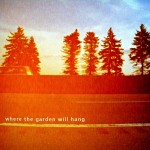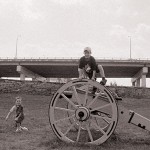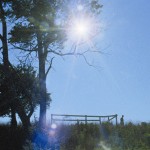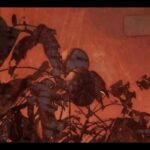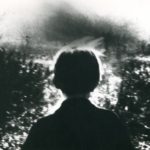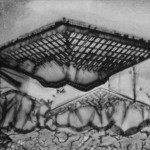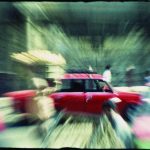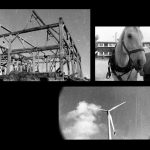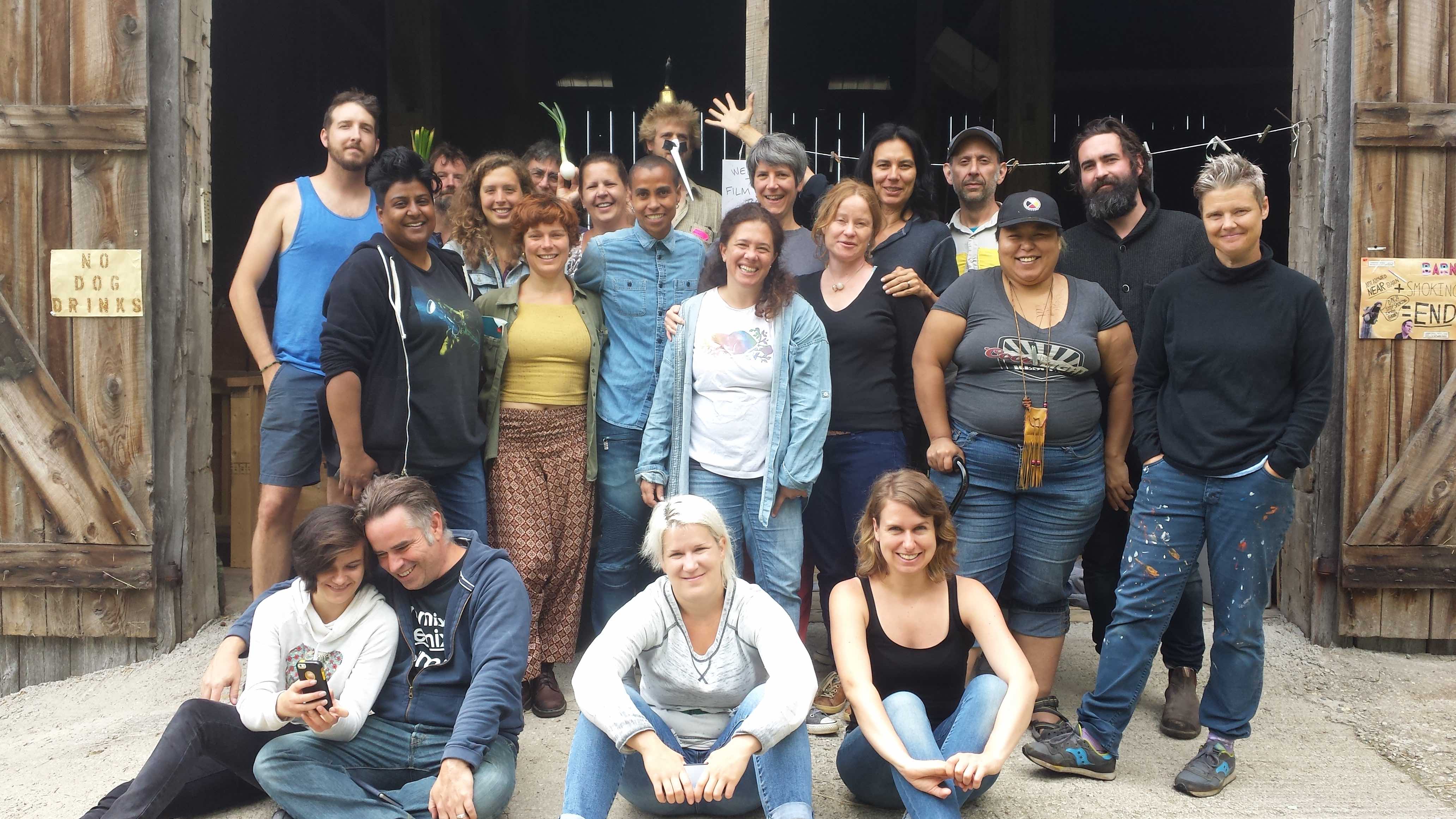by Barbara Sternberg
BS: Hi Philip – When I saw What these ashes wanted (which I was almost afraid to see: would it make me cry over our loss of Marian; might I feel you had exploited Marian’s death for a film?), I felt it was your most successful film—most complete, most fulfilled in its methods and purpose. I mean that form and content were synthesized. (Of course, to be reminded of Marian’s liveliness and bravery in life as well as facing death brought sadness.) The film had a looseness, an openness (reduced use of the first-person voice-over, passages of silence, different types of footage and shooting styles, a relaxed episodic structure) that gave Marian, yourself and the audience respectful space. The film breathes, it’s organic-it moves forward, yes, but there are detours, meanderings in its progression. You have always done beautiful camerawork, but I could connect to this shooting and how it figured in the totality of the film more than in any other (Opening Series and Chimera have shooting I also love and seem to mark a change in approach). After the film I came home thinking how all your films carry forth certain inter-related themes: autobiography (film as constructed memory) which has been constantly examined since your first film Onthe Pond; the ethics of filming, most clearly stated as problematic in Somewhere Between Jalostotitlan and Encarnacion; and death. The fear I had had of exploitation, a question of ethics, was addressed in the film’s dialogue:
PICTURE: SILOUETTE OF MARIAN ON HOSPITAL CURTAIN
MARIAN: …if you could have a ritual for death what would it be…and would it be private or shared.
PHIL: ..I think it would be shared.
CAMERA TILTS TO MARIAN’S EYES…THEN TO THE LIGHT
Opening Series dealt with authorial control, an ethical problem for you, by handing over the sequential ordering of its parts to the audience and to chance. I remember you’ saying, “Why should I have total control?” (One might also think of new music’s compositional principles of indeterminancy and chance.) The choice of order of the rolls gave an element of random chance and loosened the strength of narrative line.
PH: It was also to create a space where the audience, myself and the work could come together and manifest something. Each screening would be different not just because of the order of the work, but the order would reflect its audience. For example, I had shot some footage in Egypt of this Dutch companion that we met along the way who was filming Berber people holding up their tools and crafts. My filming of him, filming the Berber man, became kind of a critique because I included the photographer in the shot. That was shown at an event where he was present in Holland. So, not only did this become an issue when we discussed it after the screening, but there was also some kind of psychic manifestation that happened in the ordering. The way the other elements proceeded and followed this problematic image forced a particular reading of the situation. This was quite surprising. It’s like divining with the I-Ching. So, in Opening Series I was also trying to deal with these sort of invisible links between people, objects, in and out of art making.
BS: In Ashes you make editing choices and yet retain an openness. Space. This new openness is not only a strateg, but a place from which to make a journey, a film. (Is there a difference for you? Is living filming and vice versa? )
PH: I approach every film differently, so I’m not sure the next one will have the same kind of openness, though I think this is something that I have been developing since the early 90’s in films like Opening Series (1992-95), Chimera (1996), Kokoro is for Heart (1999), and most recently What these ashes wanted (2001) I suppose there is not the same need to say things so overtly as in ?O,Zoo! (The Making of a Fiction Film) (1986), or in some of the collaborations I made in the 90’s where it seemed the process of collaboration and its outcome was more important than developing my own voice in the way I did in the ` looser films mentioned above. The 90’s for me was a time to try different ways of working but the most common element was collaboration, whether it be an aleatory collaboration with the audience who helped to place Opening Series in an order, or my `directorial’ collaborations with Wayne Salazar in Destroying Angel (1998), Sami van Ingen in Sweep (1995) or Gerry Shikatani in Kokoro is for Heart.
BS: The story (made up? I had assumed) of film kept in the freezer, unprocessed in ?O, Zoo! is told again, in What these ashes wanted, but this version and this time, it’s true – right? In Somewhere Between Jalostotitlan and Encarnacion (1984) you questioned your right to film the death of a Mexican youth—at least text over a black screen told us this seemingly true story.
On the road dead lies a Mexican youth
I put the camera down…’
(excerpt of text from Somewhere Between)
In “…Ashes…” you say that just before Marian died you two slipped out of the hospital at night down to the lake’s edge, and here’s the photo of the lake you took.
I took a picture, you skipped a stone
(excerpt of text from What these ashes wanted)
But just prior to this we see a similar scene from a TV soap opera! Ethics, authority of the filmmaker, veracity, credulity, autobiography… So much of your filmmaking and teaching favors personal story-telling and yet you question both the ethics of film and the possibility of truth. Where does Ashes stand in relation to these terms and in relation to your previous films—and where do you think you place the viewer?
PH: The fallen elephant story in ?O,Zoo!, in which I film a dying elephant and then feel badly about filming it, exploiting the elephant for this sensationalistic act, and subsequently I put the film in the freezer—is a metaphor for what actually happened in my youth as the family photographer, when I filmed my grandfather in the casket at the request of my uncle. Subsequently, in horror at what I had done, I put the film in the freezer. I think when I wrote the story for ?O,Zoo! in 1986 I didn’t realise that unconsciously I was expressing this repressed traumatic experience. I found it quite curious that I had written a fiction, that had its source in a true story, which had happened, but that I didn’t know I was creating a stand-in for this difficult experience. The unconscious was pulling at my shirtsleeve, saying look here, remember this.
In Ashes, the Baywatch scene at the beginning of Part 3 mirrors the personal story of Marian and I leaving the hospital the night she found out she had cancer. The TV soap represents the way, through mass media, our culture presents grieving. Ashes offers another method. Some of Marian’s last writings, which I cherish, came after our final walk on the beach. She wrote in a way that told me that this was not just for her, but the writing should be passed on. In her grief, she had found out something that night and was offering it up. I was the one who could release it to the world through film.
TEXT ON SCREEN (black text supered over window):
The night we had our last walk
she wrote these words:
TEXT ON SCREEN (white on black):
We come together separate
cry and look wide eyed bewildered…
I want to be near the water
We bundle up and leave the hospital for the beach
Beautiful clear crisp blue skied night
we mourn together
laughing at intervals
clinging madly to some sense of life
The open sky water makes me feel
part of something immeasurable
larger than me
and it is consoling
STILL PHOTOS OF MARIAN’S ROOM
(excerpt of text from What these ashes wanted)
So in a way, my films blend fiction with real life experience, and the fiction is usually grounded in lived experience. My sense is that once these expressions are mediated through the filmmaking, they are fictions anyway. I feel fine with this as long as what is made up is somehow a reflection of, or is based on, or comes out of a lived experience-which usually happens naturally. I try to let the experience of filming or photographing or recording audio, happen out of an authentic process of trying to find something out, or communicating something to someone. The residue of this process finds its way into my films.
I think Somewhere Between and ?O,Zoo! are dealing with ethics, but the starting points were traumatic moments that occurred while filming. I feel my calling is a filmer of life. A death occurs in front of me so I have to do something about the experience. During the filming of Somewhere Between I remember sitting on the bus with the camera on my lap, feeling the whole horrible experience. I chose not to film, perhaps more as a gut reaction, but when I returned to Toronto the aura of the boy’s death laid over me like a blanket. I wanted to still make a film about this sacred moment, which I had witnessed, without the so-called crucial image.
reaching out,
the white sheet is pulled over the dead boy’s body
the children wept…
the little girl
with big eyes,
waits by her dead brother
big trucks spit black smoke
clouds hung
the boy’s spirit left through its blue
(excerpts of text from Somewhere Between)
BS: So, in a way, all your films exist to have the audience at some moment wonder: what is truth? What is fiction? What is film? Is this truth? All of those things are floating around. As audience we go in and out of being sucked into the film the way mainstream films tend to operate on us, and then we’re conscious that this is a construct, that there are certain clues within it that make us say, Wait a minute… and give space to interact with the film. Reality is the interaction between us and this thing you’ve put out called a film.
PH: You asked me earlier if I brought the camera to the hospital to film Marian. The answer to this question expresses something of how I work, of my process. Marian was in the hospital. It was the fall of 1996, `the days of protest,’ and she was mad as hell at the Harris government and all the cuts that were occurring to the social programs. This also effected her directly `on the floor’ in the hospital she was in. She was trying to write a story about all this and she was taking pictures of herself in the hospital.
After Marian’s death, I developed the roll she had taken in the hospital, and found this picture of her, in silouette. She took it of herself in silhouette against the hospital curtain. She also filmed the same curtain from the same angle, and left herself out. Blank. The picture made me shudder. Most often, the powerful personal images, which I use in my films, have had other purposes.
Sometimes I do find it necessary to ask family or friends if I can use a particularly `personal’ recording. In an earlier work, passing through/torn formations (1988), there is a sequence about my …uncle and his daughter, who had not seen each other for sixteen years. I met him in his pool hall hangout and told him his daughter wanted to see him. He said he’d flip if he saw her so instead he gave her a present. I followed him into the drugstore and he found this mirror that was in two parts, that folded into itself – a ‘corner mirror’ he called it. He felt it showed you the ‘real’ reflection of yourself, ‘the real you.’ It technically does this since it is constructed as two separate parts, the image of yourself, though severed, reflects into itself, thereby rendering your portrait normal, like a photograph. Your face isn’t reversed in the way a normal mirror reverses your features. In exchange for the corner mirror she wanted to send her father a recording, so I taped her message to him. It was my idea to also tape her looking into the ‘corner mirror,’ describing her own facial features. I found him again, and we listened to it in my car. He was deeply moved. A few years later when I was finishing the film I asked her if I could use her voice from the recording and the film we shot of her looking into the corner mirror, and she agreed. As for my uncle, we spent some evenings looking at different cuts of the film, while he played music to it. I used his music in the film. Later I showed him parts of the finished film, but he was most interested in the music. I had thought the film could be a vehicle for me to get to know my uncle again, who used to take me fishing and teach me accordion when I was young. I guess it did somewhat, but it was a bit romantic on my part. I was young when I started this film, around 25. Anyway, I find that this kind of material works well for me as it kind of rings true. It is the residue of lived experience. When I start imagining something that I should film, and then I carry it out, it often seems contrived and it’s often not as exciting as working with what comes along.
BS: When I used to be the photographer for a friend’s wedding or anything like that, it kept me at a remove, this in-between space of the camera, between the event and me.
PH: It is the event. Everyone is using images, looking at pictures and video. It’s not once removed, and it is as authentic a moment as any other. The question is how to position it within your experience.
BS: It’s how you interact.
PH: It’s how our culture interacts.
BS: Your first film On the Pond (1978) starts out with you and your family looking at family slides, and on the soundtrack we hear your family commenting and reacting.
PH: Yes, to me this is a continuation of an oral tradition I learned from Babji, my grandma. She would talk to us about our dreams at the breakfast table. The difference is I use a tape recorder and transport conversations through my films.
BS: I want to go back to the term “autobiography”. You’ve made a home movie, a road-movie, a making-of-the-movie movie. I guess your films are autobiographical in that they represent the truth of how it is for you, subconsciously, psychically, spiritually, as well as materially. Do you feel the term autobiography is applicable to you?
PH: I don’t use it much because autobiography assumes that it’s just about yourself. My films are about people and places around me, though strained through my perception. When a writer uses material from their life in a novel, we do not call the book an autobiography. I suppose we might say there are autobiographical elements in the work, but that is common with most art. It is only that the photographic or electronic image is a good stand-in for the real, so we cannot get around the fact that people depicted in a `documentary’ are actually and fully ‘on the screen!’ But we know it’s still an expression or reflection of the person, of the originating moment. Films are constructions, and in my work I construct characters out of the residue of real life experiences.
BS: As Godard says: Film is truth at 24 frames per second, all film is fiction. Do you think the focus on death in your work is because of your personal experiences with your grandmother and Marian?
PH: Everyone experiences a death close at hand but not all filmmakers deal with death so directly, or so often. Maybe it was this initial experience filming my Grandfather in the casket. You know we spend our lives working through this mess…. whether it be a difficult birthing or a difficult family relationship. I’ve said before that childhood is so traumatic, most of us sleep through it… maybe the next part of that statement is that we spend the rest of our time consciously or unconsciously shedding this inevitable pain. I’m glad I have filmmaking because it seems to be a good place to put all this stuff. Maybe I was marked by that experience and I have to keep pushing the rock up the hill—my karma?
BS: Do you think it has something to do with your Catholic upbringing (we saw you at your first Holy Communion in both On the Pond and Kitchener/Berlin)?
PH: What I think my Catholic upbringing taught me was that bread can turn into body and wine can turn into blood. The material and the invisible (spiritual?) are interchangeable, certainly one isn’t more important than the other. My films, like many experimental films, take on a form that honors what we can’t see with our eyes. I work with the photographic image, this art that can represent real material objects/beings most precisely, but eventually my intent is to shed light on the things we can’t see.
BS: …or your German ancestry? The reason I mention the German ancestry is because a couple of times, in passing, you’ve made a comment to me about your name Hoffman, and that the name Hoffman is German… and I thought, perhaps, you were saying it to me because of my Jewish background.
PH: Right.
BS: And that was a link between us to that history.
PH: Yeah.
BS: And what to do with that? The burden of that history.
PH: Yeah. Yeah.
BS: So, the reason I mention it here is because, certainly recent past German ancestry calls up the Holocaust, and the Nazi period. I don’t know if that’s on your mind at all, as a burden.
PH: Well, it’s in passing through. It’s easier to deal with on my mom’s side, which is Polish—the occupation her family experienced in their homeland by the Germans. There are two stories in passing through, but it’s not dealt with directly, only as a part of the family’s shared history. I also have some old 1/2 “tapes of my German grandma looking at photos from her past and talking, so they may be a vehicle to deal more deeply with this subject.
BS: Films to come?
PH: Maybe.
BS: Are the encounters with death the catalyst for making the films? I recall Bruce Elder pointing out (in a class he was teaching) how Michelangelo Antonioni’s protagonists are separated from others and the flow of daily life by an encounter with death which gives them a different awareness.
PH: When the death of a loved one occurs you do go into a different space, and I did film some moments within that space after Marian passed away. However, I am not only in a movie, I’m also looking at my own experience from the outside as I construct the film. Certainly as time passed, my own state changed. As I make my films I’m dealing with people directly, my filmmaking is social, I’m sharing it with the world. I’m making this work and I’m showing an installation of it in Finland and Sydney. I’m not separated from the culture, I’m embracing it, trying to find a ritual to deal with death which makes sense to me, and I hope others. This makes more sense to me than the funeral parlor, the casket, and going into a room with all the flowers and everyone afraid to say anything.
BS: I remember at Marian’s memorial service. I was really enriched, and felt I had gained so much from it. But my initial reaction when you showed a film during the memorial was, I was taken aback. I thought, he’s showing a film at her memorial?! But by the end of the whole service, with everyone contributing in their own way, I felt that I had been enriched, and educated, and moved.
Ph: Well, I felt it was the only thing I could give because I couldn’t talk. It was just a poem about her first coming to the farm, and a kiss.
BS: With Opening Series and Chimera and now Ashes your shooting has changed. The camera is much less stable, more fluid and animated with shorter takes. Where did this come from? Do these signal filmic and/or philosophical developments?
Ph: I started shooting in short bursts in Chimera (and in some sequences of Ashes) around the time the wall was coming down in Eastern Europe, and the Internet was going up everywhere. My drive to fragment came from a perception that something was breaking down…well so was my reliance on the photographic image as document, as opposed to expression. I think in Ashes I maintain a better balance between these two aspects which I hold a high regard for. When free association becomes the mode of perception, which is the only sensible tool when so much is up in the air, making a mosaic film is more apt to navigate this space we live in, as opposed to the page-turning form of linear narrative. You’ve also been working in this way, evoking a kind of present-ness…
BS: With presence. When I started shooting in short bursts and single frame it was to achieve a simultaneity of place and time I think of as reality, a relatedness, which I had approached in earlier films by superimposition. Now I was trying ‘editing’ closer and closer bits. It also came from a view of myself/filmmaker as observer rather than master or in control.
PH: There have been some great developments in this kind of work, like Brakhage. Trying to develop a spiritual space for living/filming in` the now. I love his film Black Ice and theArabic Series, and in your work I love the present-ness in Like a Dream that Vanishes. As a viewer we’re not thinking about what has happened, or what might happen. We’re right in the moment.
BS: Part of my thinking about that was if you get past the identification of what the image is, or what the narrative information of that image is, then you can get closer to a sense of being.
PH: And the flow of time.
BS: Yes, yes. That it keeps going, and you can’t stop it and hold it, and study it.
PH: “Time goes…” as Aunt Katie says in one story in Ashes. In Like a Dream that Vanishes you break it up with observations of the philosopher, John Davis, who you filmed. I think it really works, because you weave these rushing images throughout, and then we’re back listening to him talk about the `mess’ of experience…and of course we realise it’s a mess because it can’t be controlled….because living in the present is the roller coaster you can’t control.
BS: This way of shooting and making allows the complexity and wonder in. I’ve been thinking of the structure of Ashes which is more episodic than earlier works. Sequences sometimes have a loose connection, (besides being different shooting styles), but aren’t firmly attached to the preceding one. The connection isn’t justified with causality, although they seem to belong. Some were little detours and gave a bit of relief from the story of Marian’s passing. Like the Egyptian interlude. The sequences stood on their own, and yet they seemed to fit together into a whole. I felt there was a whole-ness to it, despite the fact the sequences could be quite independent. I’m wondering how you determined the structure, how you selected what to put in, and how you ordered it?
PH: It was a long and organic process that started in 1989. I was shooting single frames—zooming on each exposure to create a splayed image There were a number of projects that came out of this way of shooting: Opening Series, Chimera, and some installation works. When you are shooting without a plan, just collecting images from your life, there tends to be an organic connection between life and work.
BS: There is a unity in all your work, because you’re you.
PH: Rather than because it’s a project you are working on. As the 90’s moved along, I started working on Destroying Angel with Wayne Salazar, which Marian assisted through her talks (and recordings) with Wayne. Suddenly in the middle of it Marian tragically died. After a time, Wayne, who had a strong connection to Marian, asked me if we could use some of Marian’s story in our film, which I agreed to. At the same time, I had been asked to construct an installation in Finland. When Marian passed away, I felt I couldn’t really make the trip, but my friends there called me up and suggested I come, they’d take care of me. Since I was spending so much time going through all of the images we had together over our life, why not create something out of it? It seemed to be a positive space for me, so my friends in Helsinki helped me make a kind of offering to her, a six screen circular work, in which many of the ideas for What these ashes wanted developed. My process of finding the structure for Ashes came out of these projects which I was immersed in after Marian’s death. It just seemed to be the way I wanted to spend this grieving time. At the beginning of Ashes, there is a recording from my answering machine from Mike Hoolboom, who gracefully relays to me a story about the repairing of a precious piece of pottery, and I thought that I was trying to do the same thing with the film, with my life. To show something of beauty from a life that had been shattered through her death.
HOME MOVIE (SLOWED DOWN) OF A WOMAN (MARIAN) WALKING PAST COLUMNS IN FRONT OF EGYPTIAN MONUMENT
SOUND (TELEPHONE ANSWERING MACHINE):
MIKE: Hi Phil, I found this in a book and thought you might like to hear it, hear goes.
When I call up pictures of friends, lost, a terrible ache comes over me, so much so that it has to go away on its own, there isn’t much by way of remedy that I can do. I remember a letter of Henry James where he said that in times of great grief it was important to ‘go through the motions of life’; and then eventually they would become real again…. I’ve been trying to write myself a poem about those ancient Japanese ceramic cups, rustic in appearance, the property at some point of a holy monk, one of the few possessions he allowed himself. In a later century someone dropped and broke the cup, but it was too precious simply to throw away. So it was repaired not with glue but with a seam of gold solder. And I think our poems are often like that gold solder, repairing the break in what can never be restored perfectly. The gold repair adds a kind of beauty to the cup, making visible part of its history….
(Taken from a portion of a letter from the poet Alfred Corn, Feb 19, 1994 from the novel Heaven’s Coast by Mark Doty.)
OK I guess that’s it. See you later.
At times I think this could come off as crude, using filmmaking as a process for grieving but felt it was a way of honoring her. I went to Spain to try to find the rock opening which is seen at the start of the film, with her text superimposed, where she realizes her illness. I found this text paper clipped behind a still image of this hole, which seemed to be a cave in Guadelest, Spain. I journeyed there with her friend Belinda and we had great trouble finding it. I felt they must have removed it some how, until I looked down on the ground and saw this tiny opening, exactly the same shape as the photograph she took. We had a laugh imagining her down on her stomach trying to take this picture.
The film’s structure came after Marian’s death when I was spending this time remembering her, and bringing this film work around to friends and strangers.
BS: There was one sequence in the film, where you’re in the back seat of the car taping Marian while she works as a nurse visiting people’s homes. I thought it was a very interesting scene for its mixture of realities. Marian’s a nurse, she’s going into people’s homes, and yet this is being filmed, so is this staged for the film? No, this is real, and we’re seeing it being filmed. This scene sets up the whole question of veracity, what is real and where is the real located?
PH: Yes, that’s the synch scene where I sit in the car with this huge 3/4 inch camera, circa 1983, filming her reactions to what she has just seen on a particular home visit. She was giving up nursing so she asked me to videotape her on her last day on the job.
BS: At one point, as I recall, Marian chastises you, or gets mad at you, because you’re not answering her question.
PH: Mike Cartmell remarked that what is strong about the film is that it honors not always only her good side. You know, she was a pretty tough cookie. And it doesn’t show her necessarily in the best light, which of course, is the best light, because it was part of her. I’m in, probably, my late-twenties, and I’m saying. Yea it’s hard, the camera’s heavy. And she says, that’s not what I mean, it’s hard emotionally. It’s hard for me to be filmed, and she chastises me, and in a funny way, makes fun of me.
BS: And leaving this in gets more at this question of, where is the real in a situation? She’s saying that you answered in a superficial way. It’s an awkward situation because the camera is heavy, but she was trying to get at something below the surface. I think it’s very typical not only of your process of filming, but of Marian’s whole project of digging beneath the surface. How do we come to knowledge? What forms our sense of what’s real and true? This episode functioned on a lot of levels. I’m wondering how you see this scene functioning in the film.
PH: Well, it introduces her ‘in the flesh,’ because it’s sync sound. One of the ways that I want to represent her is as a physical being, closer to, let’s say, a realist representation of her.
BS: So it’s Marian. But its also any of us, in a sense. I mean, the film is about you and Marian, and what happened, but what if I don’t know Marian?
PH: If you didn’t know Marian, now you actually see her in the flesh. So it’s serving this purpose in the film… you are introduced to the loved one who has been lost. This is why I like to blend various forms, for example, synch sound with a more impressionistic sequence. These are different aspects of how we perceive.
But I think the purpose of this scene coming at the beginning of the film is so that there is ground to stand on for the rest of the film. We are introduced to this person in this way, twice. She comes back again, `in the flesh,’ in synch-sound talking in front of the palm trees, and again she is questioning, but mostly I like that scene because we can see her mind working…..she is constantly discovering something for the camera, which brings her to life for a brief moment.
BS: And it would seem that the process of making a film is the questioning part of the experience for you.
PH: Yeah that’s right.
BS: We’ve talked about Chimera in terms of it having been a film in three parts, and used in an installation, and now parts of it finding its way into Ashes. I just wondered how you saw that footage functioning in this film.
PH: Well, the single frame zoom footage is carried forward into Ashes, because it carries the three deaths that occurred when I was filming that way. In the early 90’s, three times death came in front of me. This occurred in 1991, 1993, and 1994. I found it strange that this kept happening, and that it was always connected to my filming. I brought these stories and this shooting forward into Ashes, because they seem to serve as a kind of premonition of death, and though one cannot really be ‘prepared’ for the death of a loved one, it seemed to make me aware that something was coming. I am troubled by these thoughts because two people died, and one nearly, which is horrific and sad. I still do not have an explanation for this so it sits in the film unresolved, like so many things in our lives….
BS: The style of that shooting, for me, points to the ephemerality of life. Each second is over, it’s not something we can hold in our hand. Whereas a still photograph gives you the illusion of having something, but really you have something out of time, and so very death-like, whereas this is alive, this is present, and yet you can’t have it.
PH: Now you see it, now you don’t. It is like that.
BS: There’s also image-to-image speed, because it’s not a single image that you zoom into and out of.
PH: Past, present and future exist at the same time, which is maybe what death is, or what happens after death. There is no form, no linear time.
BS: I also want to talk about the slow motion sequences.
PH: The first part of the film is book-ended by a shot of Marian running in slow motion, first in colour, then in black and white. As if she keeps fading, but is also eternally returning. These are representations of the dream space one is in when one has psychic trauma. She did keep coming back in dreams, or in waking life, or absurdly through the ladybug form. Just like a photograph which actually reminds me that she is gone. It is often said that photos, films or sound recordings help us to understand the past. Well, I think they also help us get through the present. Diving into this kind of footage after Marian’s passing seemed a good place for me to be.
BS: Between teaching at Sheridan College and now York University and at the Film Farm workshop, are you creating a movement within experimental film with a manifesto or credo that you espouse?
PH: I try to create a place where people can meet and be together. If it’s a movement it’s a movement of sympathy towards each other, or a place to be, where people are working together instead of tearing each other apart.
BS: Competing.
PH: Competing, or spending so much money to make a film. A place where making something is the most important thing. So I wouldn’t say that is a manifesto, but it is a place where I feel right. The farm workshop is set up so that people need to be there for the whole time, so it’s a retreat. They need to come without a script, and part of the idea is that there is a film inside and no matter where they are, it can be coaxed out. In the time they spend at the workshop they can make a start on that, or finish it, wherever they end up at the end of their stay. Participants learn certain processes, working with a Bolex, with light, with hand processing and tinting and toning. They don’t have to worry about getting it exactly right, sometimes the accidents help them find their route. It’s a bit like cooking, tasting what you’ve done, adding a few more spices here and there.
BS: I thought we could call this interview “Man with a Movie Camera” and use the photo of your silhouetted torso with swinging arm suspended by a Bolex-holding hand. I think you’ve had an image of you-with-camera in every film you’ve made. Is this honesty (this film is made by someone, it’s not objective truth) or autobiography (and that someone is me)? Is your life lived through making a film of it?
PH: Isn’t it something like a signature? Though this moves against the idea of giving up authorial control. But I think there is something important for me about being able to see where I’ve been through my films, and my life, and the people who have taught me things.
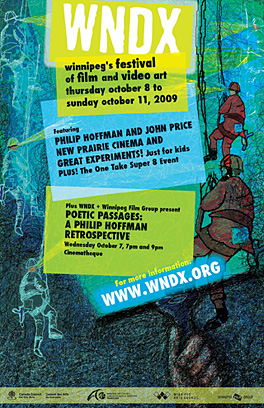 Hailing Hoffman: Legendary experimental filmmaker a focus of local WNDX Festival – “Philip Hoffman, one of Canada’s most critically respected filmmakers, is coming to Winnipeg to attend a retrospective of his short works and a screening of his first feature. Known for his distinctly personal approach, Hoffman has made over 18 short films, has had more than a dozen retrospectives of his work across the world, teaches film production at York University and is the founder of the Film Farm, an experimental filmmakers retreat. He will be screening his new film, All Fall Down, which recently premiered at the Toronto International Film Festival to terrific reviews, at WNDX (Winnipeg’s festival of film and video art) this week.” by Ryan Simmons
Hailing Hoffman: Legendary experimental filmmaker a focus of local WNDX Festival – “Philip Hoffman, one of Canada’s most critically respected filmmakers, is coming to Winnipeg to attend a retrospective of his short works and a screening of his first feature. Known for his distinctly personal approach, Hoffman has made over 18 short films, has had more than a dozen retrospectives of his work across the world, teaches film production at York University and is the founder of the Film Farm, an experimental filmmakers retreat. He will be screening his new film, All Fall Down, which recently premiered at the Toronto International Film Festival to terrific reviews, at WNDX (Winnipeg’s festival of film and video art) this week.” by Ryan Simmons
